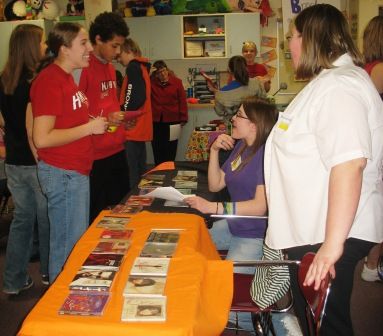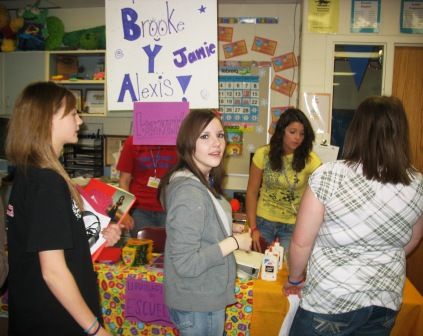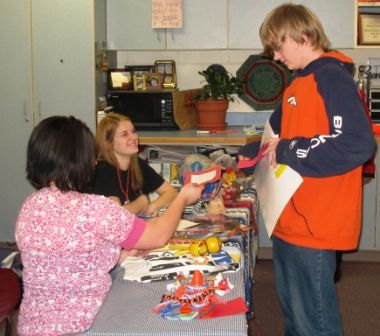Spending in Spanish!
Gastando en Español
Research* indicates that individuals learn vocabulary and
complex concepts best when they are presented “in context” and
build toward a final, feasible goal. Although experience in a
foreign country is often considered to be the most effective
“context” in which one can acquire a second language, it is also
possible to establish a meaningful context for language learning in
the classroom. For Spanish I, III, and IV students at Palmyra High
School, this “context” involved a Spanish market simulation in
which Spanish I students were required to purchase a minimum of
five items from five stores created and managed by Spanish III
students.
In the weeks leading up to this market extravaganza, Spanish I students generated a list of currencies used by Spanish-speaking countries around the globe and incorporated their math skills by converting these currencies to the United States dollar. As students practiced currency conversions, they also learned how to write checks and use vocabulary to express classroom objects, prepositions, and courteous shopping phrases one would commonly hear in a Spanish marketplace. They practiced all of these terms and concepts via bartering exercises and a live auction that brought many smiles and treasures. Before they could enter the market and take a step into Spain, they demonstrated the passports and student identification cards they constructed to pass through the strict Palmyra security. After completing these prerequisites, Spanish I students were ready for the fun to begin!
Spanish III students prepared for the simulation by writing an inventory of the many items in their tiendas (shops), which sold sundry stock from books and folders to dolls, music, and t-shirts. They put the vocabulary they gained from their recent clothing unit into practice through their extensive sale signs and store fronts as well as rich interactions they with Spanish I students. At the end of the day, they were responsible for ensuring that they kept records of their sales and made a profit.
*Swender, E. (1999). The ACTFL oral proficiency interview tester training manual.
Yonkers, NY: ACTFL.




 Launch the media gallery 1 player
Launch the media gallery 1 player Launch the media gallery 2 player
Launch the media gallery 2 player Launch the media gallery 3 player
Launch the media gallery 3 player